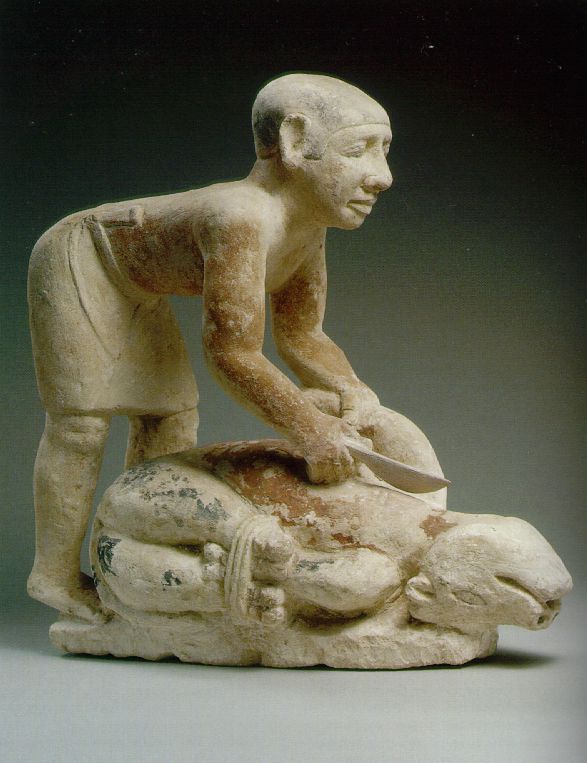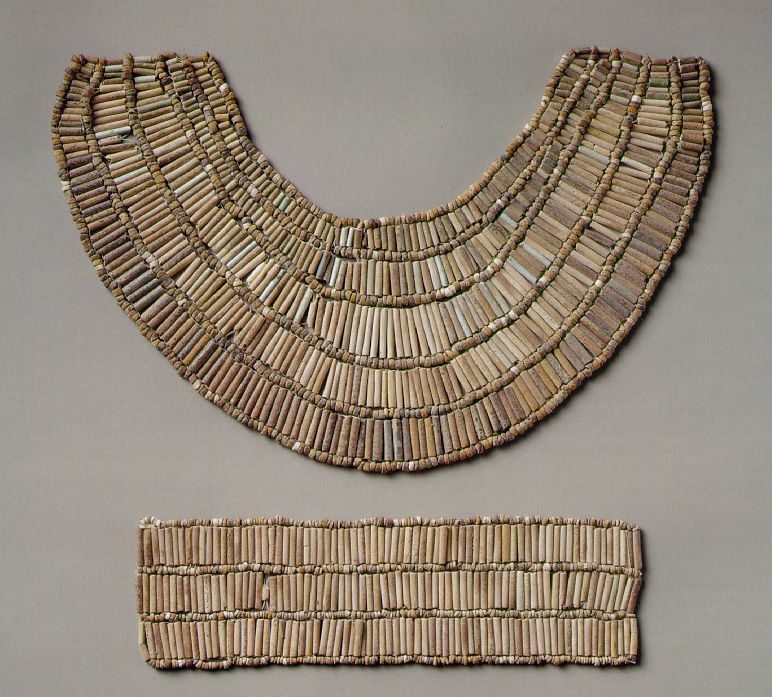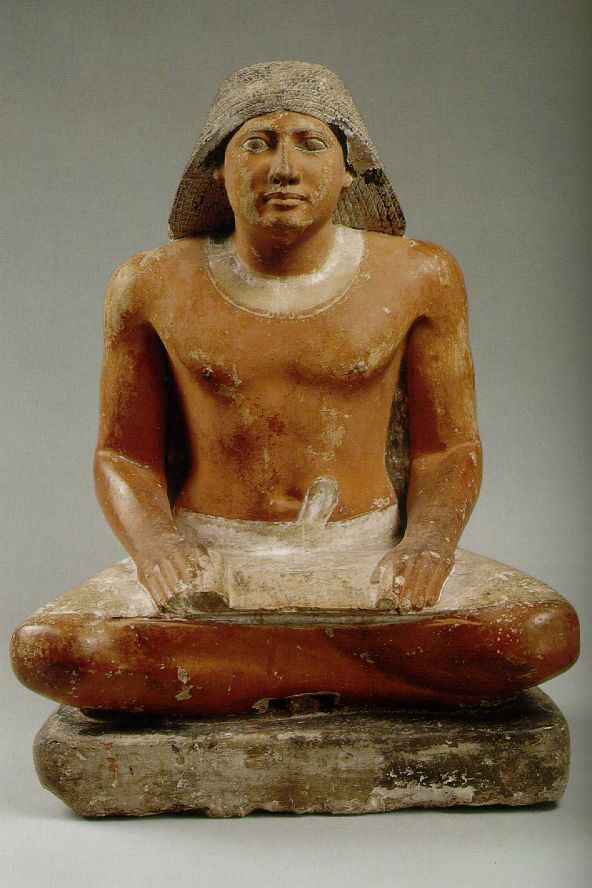Pyramids had their practical importance in the eyes of the kings and their subjects. The king was considered a divine being who held sway over them, and on his departure from this earth he would again ascend to the gods whence he had come. The pyramids soaring up to the sky would probably help him to make his ascent. In any case they would preserve his sacred body from decay.
|
Butcher Fifth Dynasty, probably reign of Niuserre Limestone with remains of paint (knife restored) Height: 37 cm (14 5/8 in) Width: 14.2 cm (5 5/8 in) Depth: 38 cm (15 in) Oriental Institute, University of Chicago
Broad collar and ankle bracelet
Relief of Itush
Ni-ka-re, his wife, and their daughter
Scribe
|




